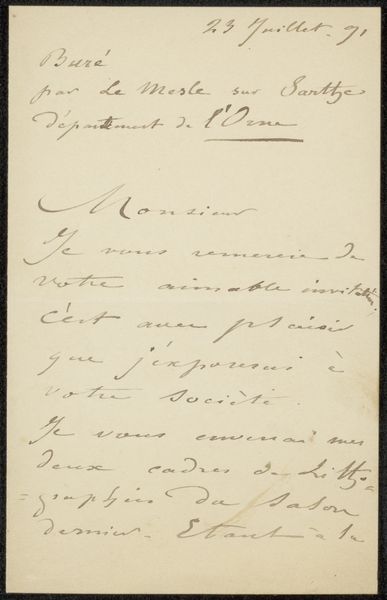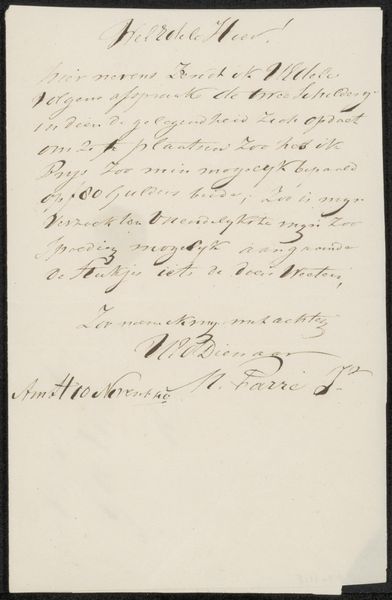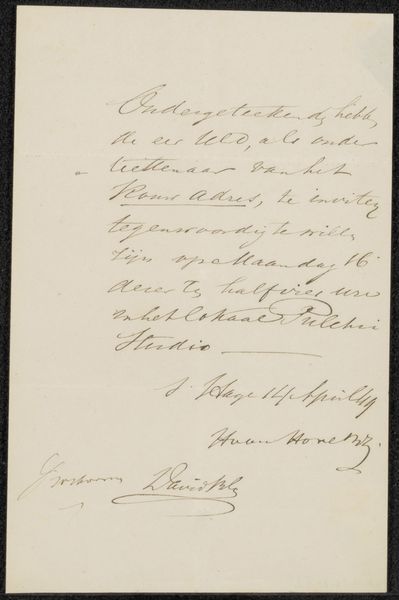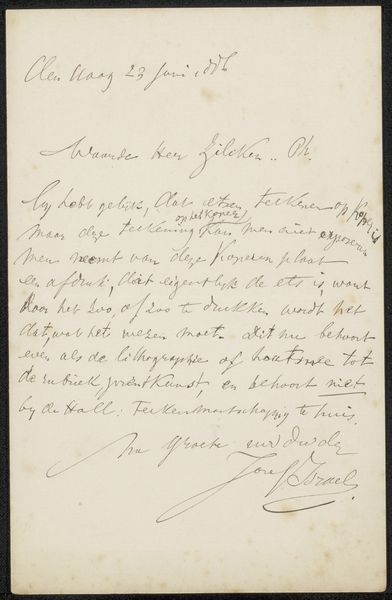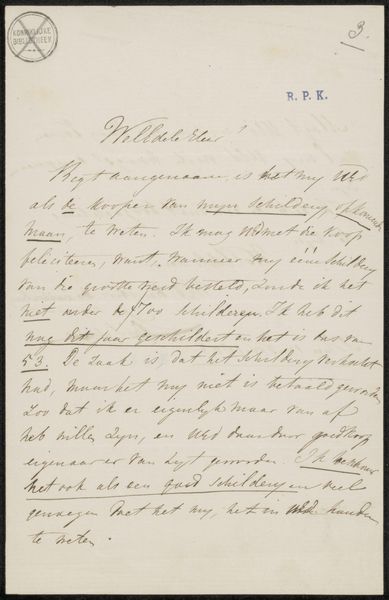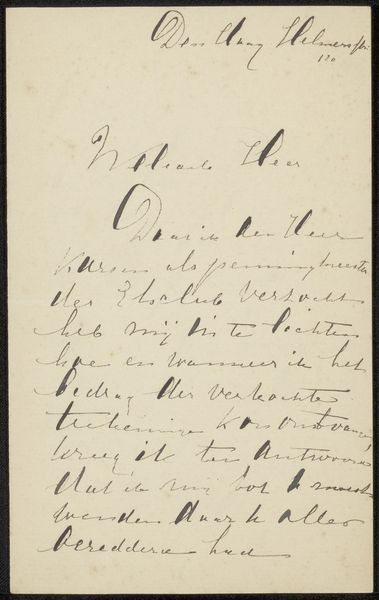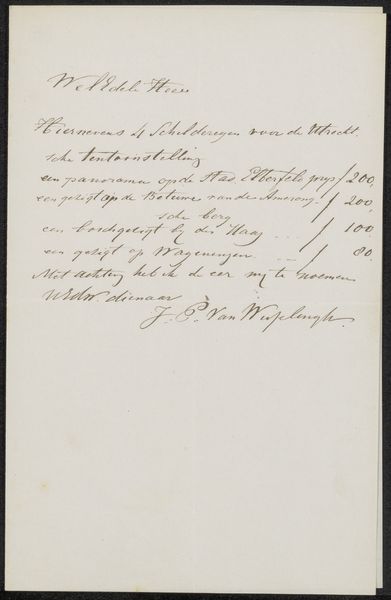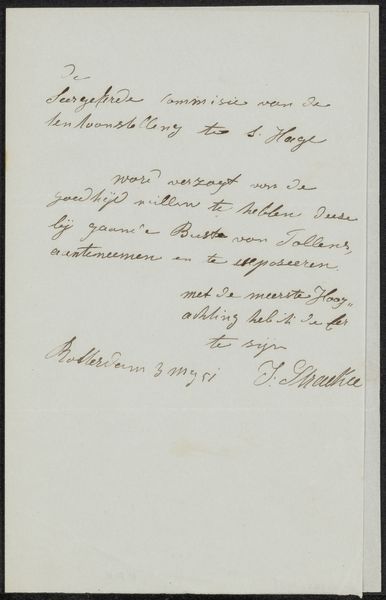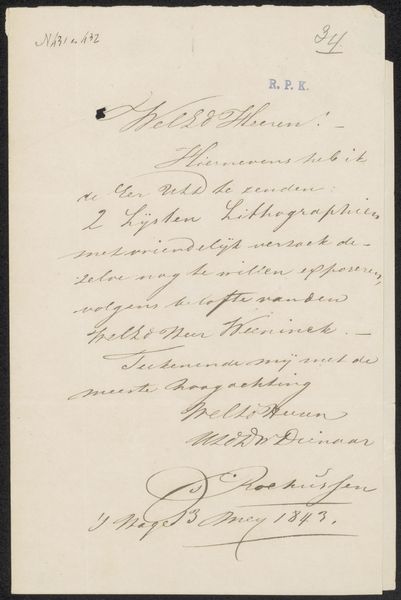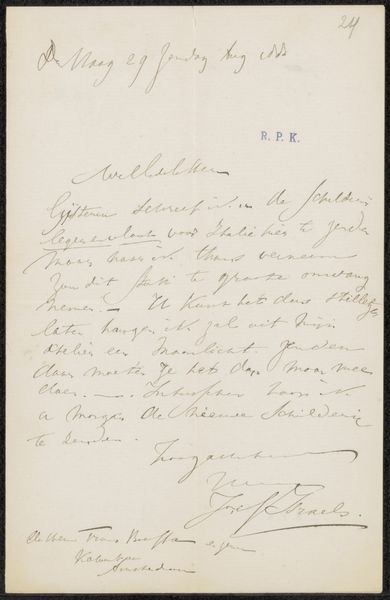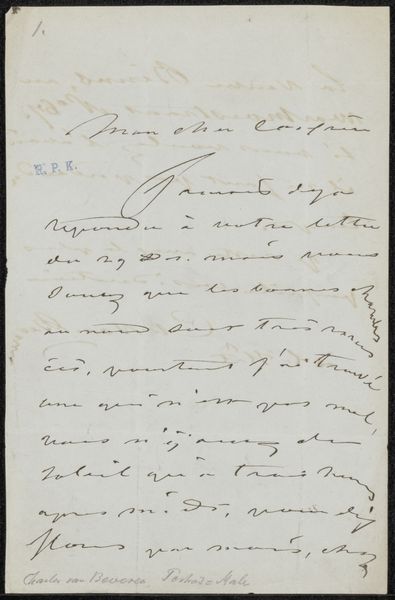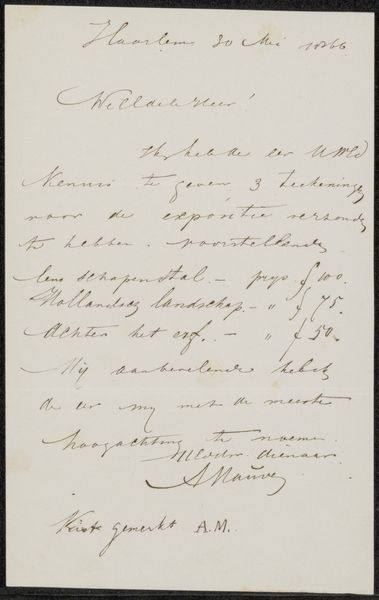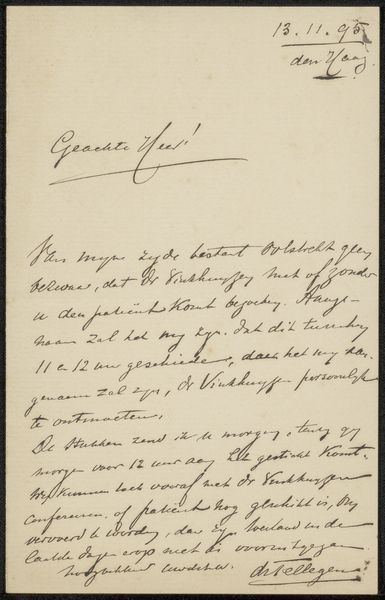
Copyright: Rijks Museum: Open Domain
Curator: What a beautifully rendered piece of correspondence. We are looking at "Brief aan Philip Zilcken," a drawing by Giovanni Boldini, likely created between 1891 and 1897. It appears to be a handwritten letter. Editor: It's quite intimate, isn’t it? Almost melancholic. The sweeping, cursive script seems to convey a certain grace, but also perhaps a hint of reluctance or regret. It's very immediate, the writing dominates the piece. Curator: Indeed. Let's consider the context of its creation. Boldini was known for his portraits of Parisian society, often commissioned by wealthy patrons. This letter gives a glimpse into the transactional nature of the art world. Perhaps he is writing to a patron or potential client. The materials are humble – ink on paper – emphasizing the work involved to maintain connections in his professional sphere. Editor: From a formal perspective, note the balance—or lack thereof. The text is concentrated on the upper portion of the paper. The elegance is created through very subtle changes in the weight and direction of line. The flourishes and the careful letterforms, betray an interesting degree of emotional detachment on behalf of the sender. I agree, it feels so ephemeral. Curator: Considering the labour, the very act of writing out a letter— the precise angle of the nib on the page— stands in sharp contrast to, say, the grand balls he depicts. I think this demonstrates the performative nature of artistry, too. One letter is perhaps one of hundreds to potential commissioners, to establish connections between him and his patron, which underscores Boldini’s engagement with social conditions of his art practice. Editor: And the writing is a deliberate construction. Look at how certain words seem almost highlighted by their bolder execution. They convey importance through carefully rendered forms; almost abstract at this scale, becoming recognizable symbols through our conscious decoding of handwriting and language. Curator: Ultimately, this small note highlights that artistic production involves networks of labor and social exchange beyond the studio or canvas. Boldini’s artistry existed to participate in the commercial transactions which would keep him productive, as with most artists through history. Editor: It’s a small window into a larger, much more complex framework, really. I've changed my mind, it is far more complex than I first thought.
Comments
No comments
Be the first to comment and join the conversation on the ultimate creative platform.
